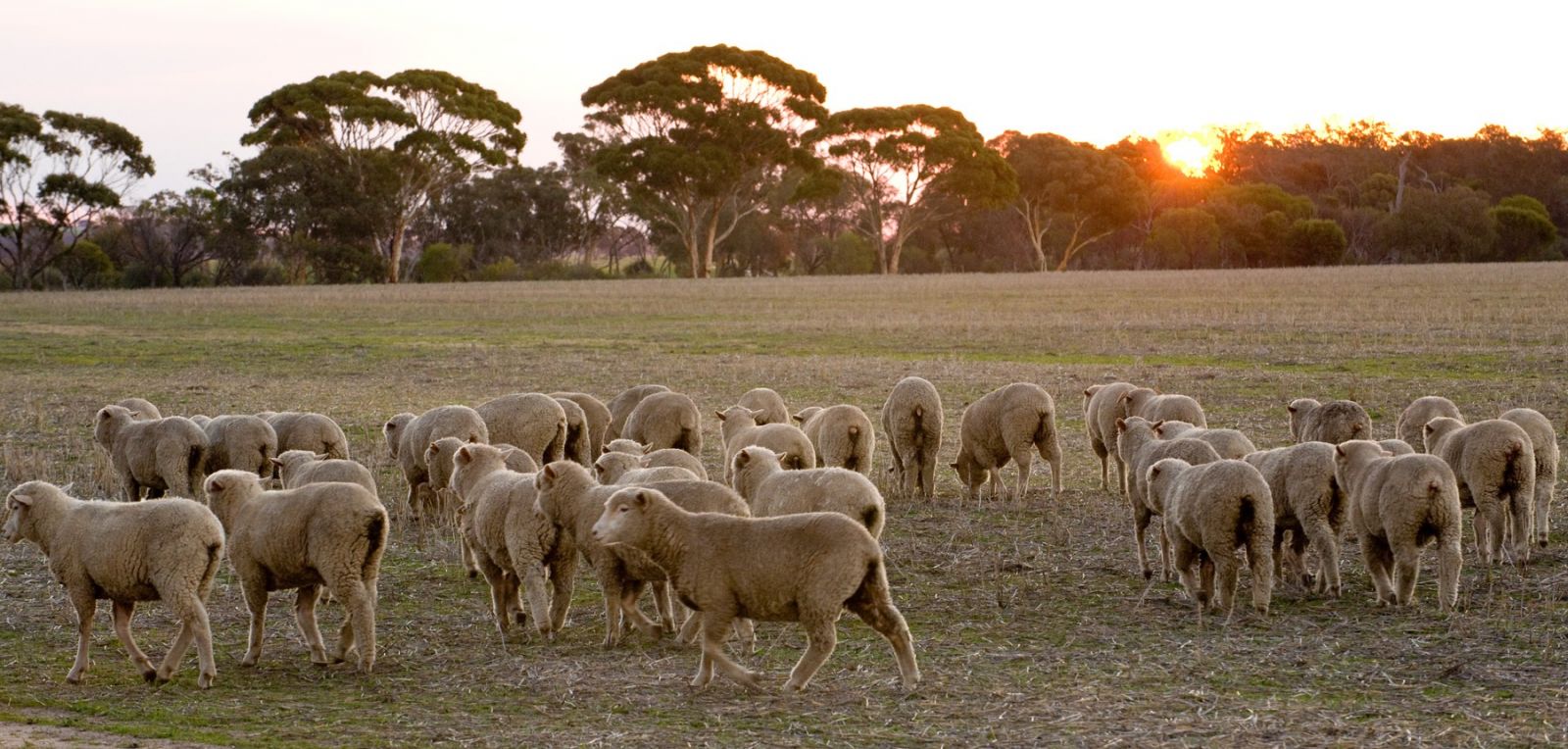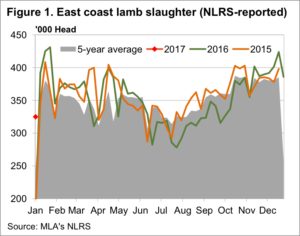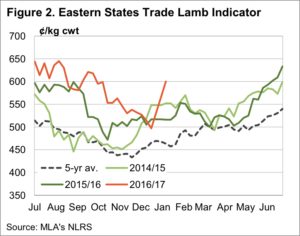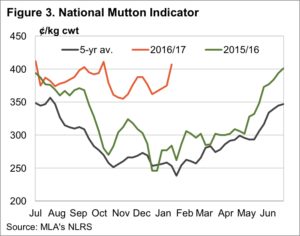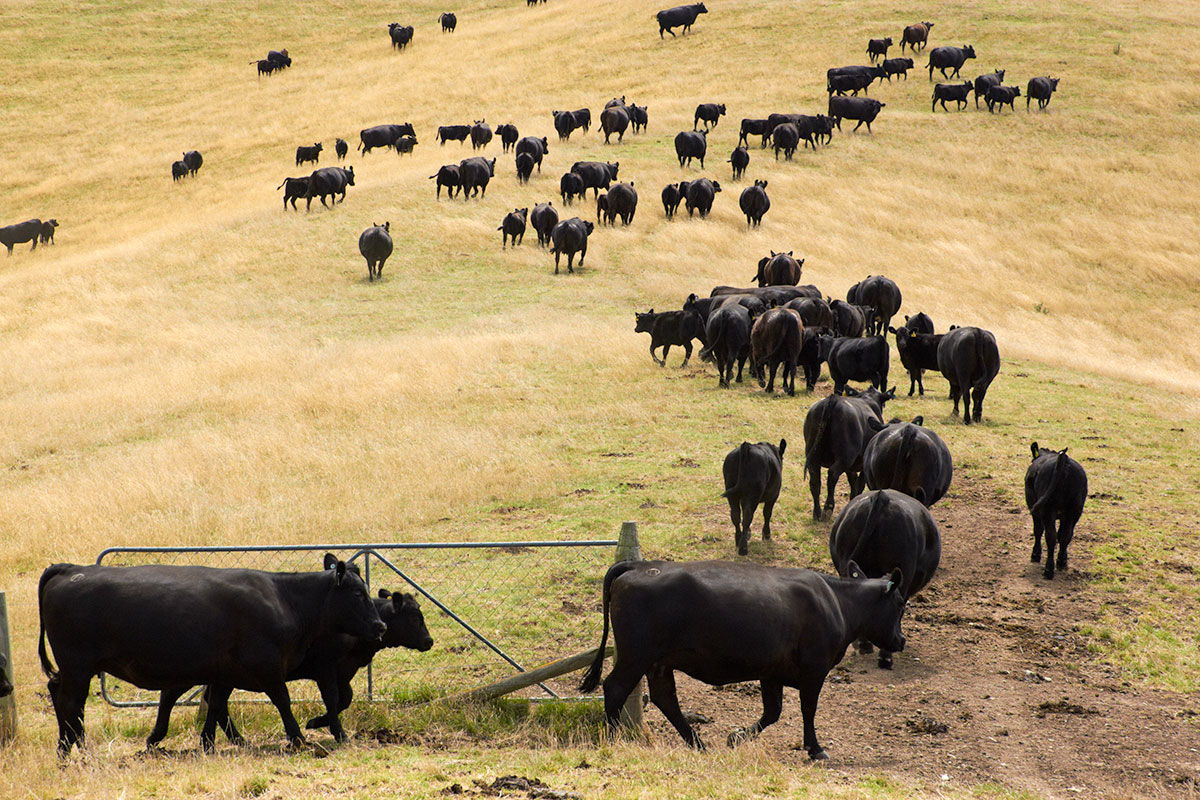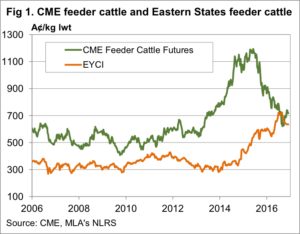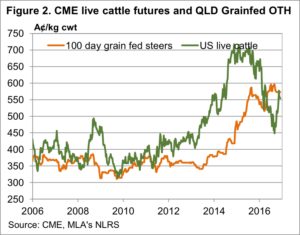At the end of sales for 2016, we noted that the wool market had 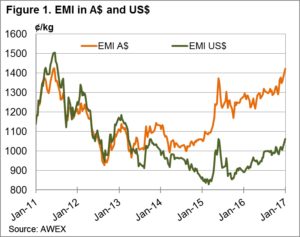
finished in line with its performance over the year, solid, firm and
resilient. There was generally a feeling of confidence, but the open
to 2017 was well above expectation. The market this week opened
strongly and then just got better.
The week started in Melbourne on Tuesday where the initial price
rises were led by the fine wool, and when Sydney joined in it had to
catch up with the early market quote reporting 18 MPG up 100 cents
compared to the last sale in Sydney of 2016.
This was a large offering, the 48,808 bales sold was 10,000 above
the average weekly clearance for 2016.
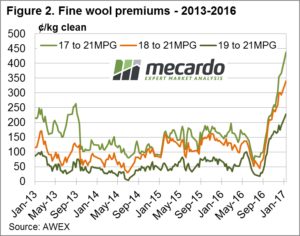
By the end of the week, the EMI had jumped 67 cents to be at its
highest level for 5 years and within 3 cents of its all-time high in
2011 (Fig 1). In A$ terms it sat at 1422, exactly 140 cents above the
level for the first sale in 2016. In US$ terms it’s at 1061, well above
the comparative year ago, level of 890. These are strong signals that
demand is improving. Percentiles are telling the story, with all types
except Crossbreds at the 95% level or better. (Table 1)
In the Mecardo report this week by Andrew Woods, Wool supply
update, the seasonal effect is starting to become obvious with the
good general spring conditions translating into the clip moving
broader. This is taking pressure off fine wool prices, in fact there
is now evidence of buyers
concern with this end of the market keenly sought out this week.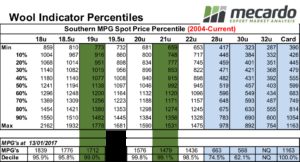
The micron movement of the clip will be most keenly felt in the sub 19
MPG which is reducing in volume, and the 20 microns and broader
which is increasing. This trend has further to run, even without further
rain for the next couple of months the path is set; the clip will continue
to move broader. As a result, the fine wool premium is likely to continue
to improve, resulting in higher fine wool prices providing that medium
wool categories can at least hold at these levels (Fig 2).
Crossbred types missed out on the general price rally and continued to
struggle, on the other hand the 30 – 40 cent lift in the Cardings indicator
pushed all 3 centres indicators to record levels.
The Week Ahead
Another big offering of 55,000 bales listed for next week, and based
on this week’s sales we expect that only crossbred producers will be
doubtful of turning up to sale. So, a big offering, however those we
have spoken to in the trade are not seeing this as a temporary spike,
and while not expecting to see the gains of this week repeated note
that the tight pipeline supply is keeping orders flowing at these levels.
The wool trade is also aware that listed bales for sale quickly drop
back to 40,000 per week.

